
Given a segment AB, its golden section ('the golden cut') is performed by finding a point S so that the segment AS is the mean proportional between AB and SB.

![]()
Let λ be the measure of segment AB and σ the measure of segment AS: we have
![]()
Solving this equation with respect to σ we get
![]()
The segment AS is said the golden portion of segment AB.
The ratio between a segment and its golden portion is said golden number and it is usually denoted by the greek letter Φ.
![]()
The reciprocal one of the golden number Φ is denoted by φ.
![]()
The relation between σ and λ suggests a way to execute the golden section of a segment AB having length λ using straightedge and compass:
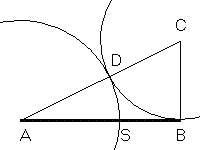
The definition of the golden section implies that the segment SB is in its turn the golden portion of segment AS.
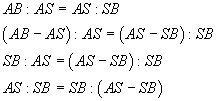
The line perpendicular to segment AB in A intersects Σ in the point E. The rectangle having sides AB e AE is said golden rectangle.
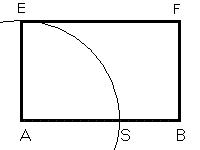
If, conversely, given a segment of measure σ, we want to construct a segment of length λ such that the former be its golden portion, we operate in the following way:
we draw the segment AB of measure σ, and we build on it an equilateral triangle ABC;
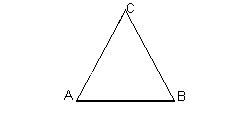
we double the lengths of the sides CA and CB, obtaining the equilateral triangle DEC;
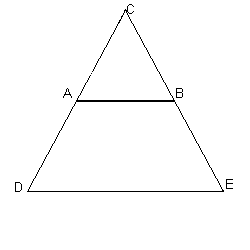
we draw the circle γ, circumscribed to the triangle DEC;
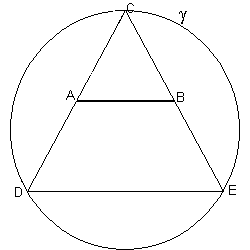
we prolong the segment AB, until it intersects γ at the points P and Q;
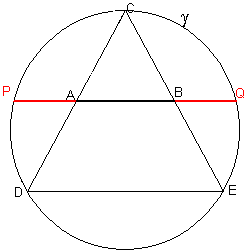
The segments PB and AQ are such that AB is their golden portion.
Indeed, by the theorem of intersecting chords
![]()
and, since ![]()
![]()
BQ is congruent with PA, which is given by ![]() , then
, then
![]()
The composition scheme given by the golden rectangle has been very important in the history of western art.